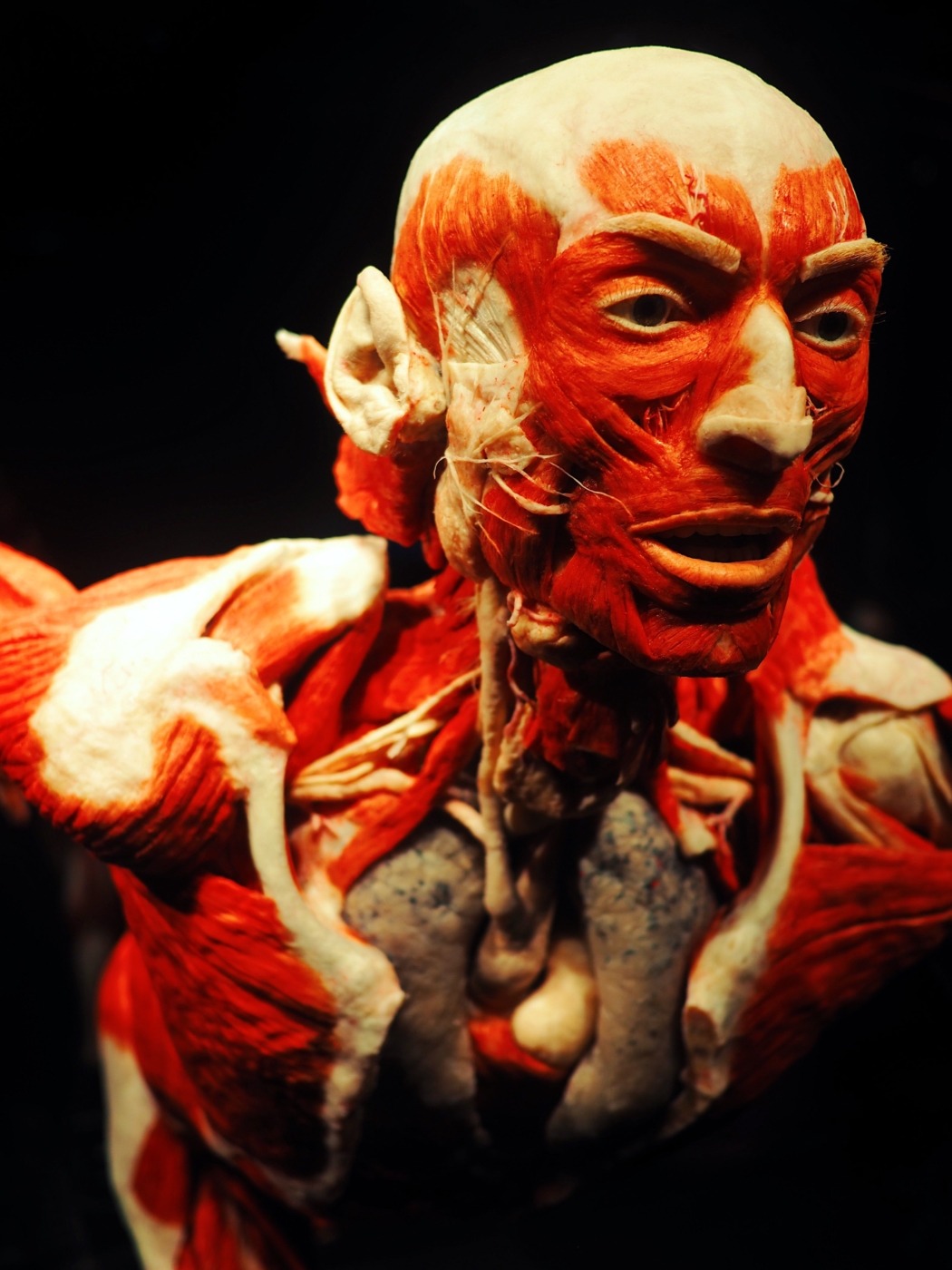The human body on display
As of October, Body Worlds, one of the most successful and controversial art exhibitions of all time, has found a permanent home in the London Pavilion, Piccadilly Circus. The exhibit consists of more than 200 real, human bodies and organs preserved and posed for display. 47 million people have visited the exhibition since it first opened in Tokyo in 1995. The exhibits and their creator, German anatomist Dr Gunther von Hagens are no strangers to controversy. With a 23-year history of legal and ethical concerns, is Body Worlds a beautiful display of the human form, or a grotesque exploitation of the dead?
The exhibit shows human bodies posed in life-like situations in various stages of dissection. Pieces showcase the complexity of the human anatomy, such as muscles, blood vessels and organ systems. It is understandable that at first sight, the exhibit is rather harrowing. The central exhibit and climax of the Body Worlds experience is the body of a human man with his internal anatomy exposed, sat astride a similarly dissected horse. His head is split vertically down the centre, and he sits with his brain in one hand and a whip in the other. If art is supposed to promote surprise and intrigue, then this display does exactly that.
Pieces showcase the complexity of the human anatomy, such as muscles, blood vessels and organ systems
In 1978, Dr Gunther von Hagens invented and patented a ground-breaking preservation method known as “plastination”. The technique involves replacing fat and water from deceased bodies and specimens with plastic in order to prevent decay. Specimens can then be handled and displayed for many years. For the first 20 years, the technique was only used to preserve small specimens and sample, but today is can be used on a much larger scale. In 1993 Von Hagens founded the Institute of Plastination. Equipment was developed which enabled entire human and animal bodies to be preserved in this way, and Von Hagens developed the Body Worlds.
All of the specimens are from the donated bodies of consenting individuals who registered themselves with the Institute of Plastination. The list of donors consists of over 10,000 individuals, 90% of which are from Vo Hagens’ home country of Germany. Many donate their bodies in the hope that they will be used to educate and inspire the public. In addition to this, plastinated specimens are used in 40 medical schools around the world, including the Warwick Medical School. They are used as a sustainable, more pleasant alternative to stand dissections.
Plastinated specimens are used in 40 medical schools around the world, including the Warwick Medical School
Von Hagens himself, and his wife and creative director of Body Worlds Angelina Whalley take great pride in their creations. 1500 hours of pain-staking work is required to create just one of the specimens. Von Hagens, who has earned the somewhat eerie nickname “Dr Death”, describes his exhibit as a way of “democratising anatomy”, giving people the opportunity to see the human body and the effect of disease and health issues. In 2011 Von Hagens announced he is terminally ill with Parkinson’s disease and expressed a desire that when he himself dies, he would like his body to be plastinated and put on display in his own exhibition.
Von Hagens rose to notoriety in 2002, when he performed a public, televised autopsy on a 72-year-old man. This was the first public autopsy in 170 years. Despite letters of warning that the practice was made illegal under the 1984 Anatomy Act, the procedure was allowed to go ahead and was broadcast by Channel 4.
Von Hagens, who has earned the somewhat eerie nickname “Dr Death”, describes his exhibit as a way of “democratising anatomy”
Over the years there have been may legal accusations brought against Body Worlds and it’s creators. In 2002 charges were brought against Siberian senior pathologist and coroner Vladimir Novosylov regarding the illegal shipment of 56 bodies to Heidelberg, the location of the Institute of Plastination. Von Hagens was called as a witness, but was not charged. In October 2003, Von Hagens was accused of illegally receiving and plastinating several hundred corpses from prisons, psychiatric institutions and hospitals, some without notifying the families. Von Hagens testified that he received just nine bodies, none of which were used in his exhibits. He denied all responsibility and involvement in the notifying of the families, and was never charged.
This controversy fuelled the many complaints and protests by the public about the exhibition, many of which are based on concerns as to whether all of the donors truly did consent to the use of their bodies. It is doubtful that the public will ever be completely as ease with the use of human bodies as art, as many believe the process lacks dignity and respect for the dead. Others however believe it is a beautiful celebration of the human body, as well as being an important educational tool.
Von Hagens was accused of illegally receiving and plastinating several hundred corpses from prisons, psychiatric institutions and hospitals, some without notifying the families
There’s little doubt that the notoriety and success of Body Worlds will continue. People will continue to flock to see the inner workings of the human body, displayed in a way that ties our anatomy intimately to our humanity. Many would agree that controversy aside, Body Worlds is a unique and fascinating experience, which also serves as a subtle reminder of our mortality as humans.

Comments
Comments are closed here.